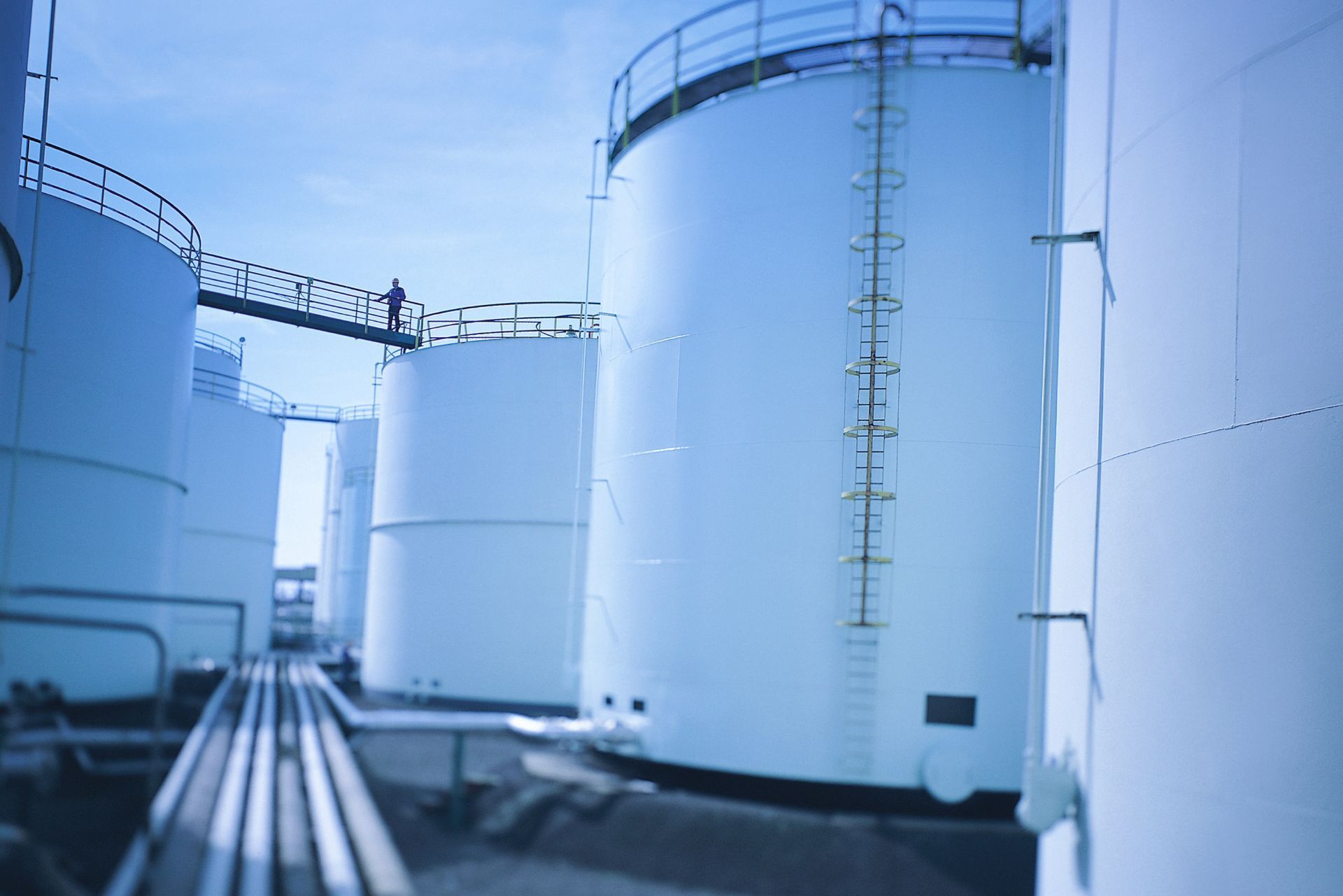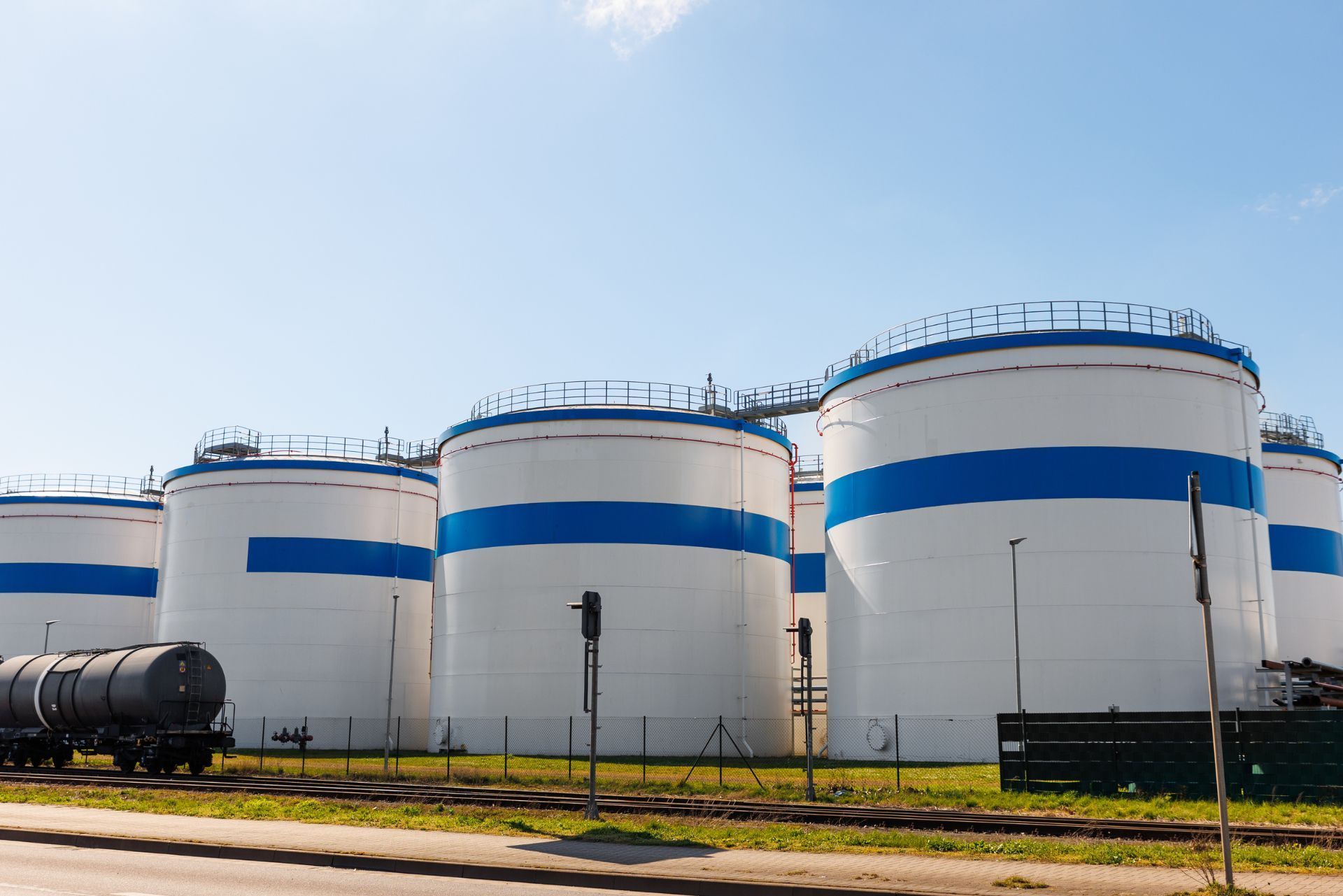Top 3 Recommended Policies

Underground storage tanks (USTs) are a critical component of many industries, primarily used to store petroleum products safely beneath the surface. With approximately 542,000 USTs in operation across the United States, the potential risks associated with leaks and environmental contamination are significant. This makes storage tank liability insurance an essential safeguard for operators, helping to mitigate the financial and legal consequences of spills, leaks, and remediation efforts.
In this comprehensive guide, we’ll explore what storage tank liability insurance covers, why it’s increasingly important, the challenges insurers face, and recent developments in the market. Whether you’re a tank operator, environmental consultant, or insurance professional, understanding these key elements will help you navigate the complexities of this vital coverage.
What Is Storage Tank Liability Insurance?
Storage tank liability insurance is a specialized form of environmental liability coverage designed to protect owners and operators of underground and aboveground storage tanks from financial losses related to environmental damage. This insurance typically covers costs arising from leaks, spills, third-party claims, and site cleanup or remediation efforts.
The risks associated with storage tanks are unique because leaks can go undetected for long periods, causing extensive environmental harm and costly cleanup operations. For example, the average cost of cleaning up a leaking UST is estimated at around $130,000, but this figure can easily exceed $1 million if groundwater contamination or third-party damages occur. These high potential costs underscore the importance of having robust insurance coverage in place. Furthermore, the financial implications are not just limited to cleanup costs; they can also include fines from regulatory bodies, loss of business income during remediation, and damage to the company's reputation, which can take years to recover from.
Coverage Components
Typical storage tank liability insurance policies include:
- Pollution liability coverage: Protects against contamination caused by leaks or spills.
- Legal defense costs: Covers expenses related to lawsuits or regulatory actions.
- Cleanup and remediation: Pays for environmental cleanup efforts mandated by authorities.
- Third-party claims: Covers bodily injury or property damage claims from affected parties.
Given the complexity and severity of potential incidents, operators are advised to seek the broadest available policies to ensure comprehensive protection. Additionally, it is essential for operators to stay informed about the regulatory landscape, as laws and requirements regarding storage tanks can vary significantly by state and municipality. Regular training for employees on best practices for tank operation and maintenance can further mitigate risks, ensuring that any potential issues are identified and addressed before they escalate into serious problems. Moreover, many insurance providers offer risk management resources and consultation services, which can help operators implement effective strategies to minimize their exposure to liability.

Why Is Storage Tank Liability Insurance Increasingly Important?
Environmental regulations and public awareness about contamination risks have heightened the need for reliable insurance coverage. Leaking tanks can cause severe environmental damage, including soil and groundwater contamination, which leads to costly remediation efforts and potential legal liabilities.
Washington State, for instance, currently has an estimated 2,900 leaking underground storage tanks, highlighting the ongoing challenges faced by tank operators nationwide. Without adequate insurance, operators may face devastating financial consequences from cleanup costs and legal claims.
Moreover, the storage tank liability insurance market is growing steadily. Valued at approximately $2.15 billion in 2024, the market is projected to expand at a compound annual growth rate (CAGR) of 5.8% through 2033. This growth reflects the increasing recognition of environmental risks and the demand for specialized coverage.
Recent innovations in insurance offerings also reflect this trend. In June 2025, Victor launched an environmental liability insurance program tailored specifically for U.S. storage tank operators, providing coverage for spills, legal claims, and site remediation across all 50 states. Such programs are designed to address the evolving needs of tank owners in managing environmental risks effectively.
For operators looking to stay ahead, expert advice emphasizes the importance of proactive risk management. As Gene Nosovitch, a commercial insurance consultant at Alera Group, notes, "The best defense is a good offense" when selecting the broadest available environmental liability policy.
In addition to the financial implications, the reputational risks associated with environmental incidents can be significant. Companies that experience tank leaks or contamination events may face public backlash, leading to a loss of customer trust and potential declines in sales. This underscores the importance of not only having insurance coverage but also implementing robust safety protocols and regular inspections to prevent leaks before they occur. By fostering a culture of environmental responsibility, businesses can enhance their brand image and demonstrate their commitment to sustainability, which is increasingly valued by consumers.
Furthermore, the regulatory landscape continues to evolve, with more stringent requirements being enacted at both state and federal levels. For example, the Environmental Protection Agency (EPA) has been actively working to tighten regulations surrounding underground storage tanks, mandating more frequent inspections and stricter compliance measures. As a result, tank operators must stay informed about these changes and adapt their practices accordingly. Engaging with industry experts and participating in training programs can provide operators with the knowledge and tools necessary to navigate this complex environment, ensuring they remain compliant and protected against potential liabilities.
Challenges in Offering Storage Tank Liability Insurance
While the need for insurance is clear, underwriting storage tank liability policies presents unique challenges. One key difficulty is the nature of the risk itself. As Canaan Crouch, Managing Director at Jencap Specialty Insurance Services, explains, "The difficulty with offering UST coverage is that we are writing something similar to term life insurance, where younger risks are preferable to carriers than older risks."
This analogy highlights that insurers prefer tanks that are newer or well-maintained because older tanks have a higher likelihood of leaks or failures. Older tanks may have deteriorated materials or outdated technology, increasing the risk of environmental damage and costly claims.
Additionally, the long-tail nature of environmental claims complicates underwriting. Leaks may go unnoticed for years, and claims can arise long after the initial incident. This uncertainty makes it challenging for insurers to price policies accurately and manage their risk exposure.
Another factor is the variability of cleanup costs. While the average cleanup cost is around $130,000, incidents involving groundwater contamination or third-party impacts can push costs beyond $1 million. This wide range of potential liabilities requires insurers to carefully evaluate each risk and often leads to higher premiums or exclusions for certain tanks.
Moreover, regulatory changes and environmental standards can significantly impact the insurance landscape. Insurers must stay abreast of evolving laws and regulations that govern storage tank operations, which can vary widely by state and locality. For instance, stricter regulations may require older tanks to be upgraded or replaced, further complicating the underwriting process as insurers must assess compliance risks alongside traditional risk factors.
Furthermore, the increasing frequency of environmental disasters due to climate change adds another layer of complexity. Insurers are now faced with the challenge of predicting how these events may affect storage tanks, particularly those located in flood-prone or disaster-prone areas. This unpredictability can lead to a reevaluation of risk models and necessitate the development of new strategies to mitigate potential losses, ultimately influencing the availability and affordability of storage tank liability insurance.
Financial Implications of Leaking Storage Tanks
The financial consequences of a leaking storage tank can be devastating for operators without adequate insurance. Cleanup costs alone can be substantial, and when combined with legal fees, regulatory fines, and third-party claims, the total expenses can quickly escalate.
Studies show that the cost of cleaning up a single spill can easily exceed $1 million, depending on the nature and location of the incident. For example, contamination of groundwater supplies or damage to nearby properties significantly increases remediation complexity and expense.
These high costs emphasize why environmental liability insurance is not just a regulatory formality but a critical risk management tool. Without it, operators may face bankruptcy or severe financial strain following a contamination event.
Furthermore, insurance coverage can help operators meet regulatory requirements and demonstrate responsible environmental stewardship, which is increasingly important in today’s regulatory landscape.
In addition to direct financial impacts, leaking storage tanks can also lead to reputational damage that extends beyond immediate monetary concerns. Companies may find themselves facing public scrutiny, which can deter potential customers and investors. The long-term effects of a damaged reputation can be felt for years, influencing not only current operations but also future business opportunities and partnerships.
Moreover, the financial implications are not limited to the immediate costs associated with the spill. The potential for increased insurance premiums following an incident can create a long-term financial burden. Insurers may view a history of spills as a red flag, leading to higher rates or even denial of coverage, which can further complicate an operator's ability to manage risks effectively. This cycle of financial strain highlights the importance of proactive measures, such as regular maintenance and monitoring of storage tanks, to prevent leaks before they occur.

How to Choose the Right Storage Tank Liability Insurance
Selecting the appropriate insurance policy requires careful consideration of several factors, including the age and condition of tanks, the types of substances stored, and the geographic location of the tanks.
Operators should seek policies that offer broad coverage for pollution liability, legal defense, and remediation costs. It’s also important to work with insurers who understand the unique risks of underground storage tanks and can provide tailored solutions.
Engaging with experienced insurance consultants and brokers can help operators navigate policy terms, exclusions, and limits to ensure comprehensive protection. Additionally, investing in regular tank maintenance and monitoring can reduce risk and potentially lower insurance premiums.
Given the evolving market, staying informed about new insurance products and regulatory changes is crucial. The launch of programs like Victor’s nationwide environmental liability insurance for storage tank operators reflects ongoing innovation aimed at better addressing operator needs.
Furthermore, operators should consider the specific regulatory environment in their region, as local laws can significantly impact insurance requirements and coverage options. For instance, some states may mandate higher liability limits or specific endorsements for certain types of substances, which can influence the overall cost and structure of the insurance policy. Understanding these local nuances not only aids in compliance but also ensures that operators are adequately protected against potential liabilities.
Another vital aspect to consider is the claims history associated with the storage tanks. Insurers often review past incidents to assess risk, which can affect premium rates and coverage availability. Operators with a clean claims history may find it easier to negotiate favorable terms, while those with previous claims might need to invest more effort in demonstrating improved safety practices and risk management strategies. By maintaining detailed records and implementing robust safety protocols, operators can enhance their insurability and potentially secure better rates in the competitive insurance marketplace.
Conclusion
Storage tank liability insurance is an indispensable component of environmental risk management for operators of underground and aboveground storage tanks. With over half a million USTs in operation across the U.S., the potential for costly leaks and contamination is significant, making comprehensive insurance coverage a necessity.
The high costs associated with cleanup and legal claims, combined with the complexities of underwriting these risks, underscore the importance of selecting the right policy and maintaining proactive risk management practices. As the market continues to grow and evolve, operators have more options than ever to protect their assets and the environment.
For those in the storage tank industry, understanding the nuances of liability insurance and staying ahead of regulatory and market developments is key to safeguarding their operations and ensuring long-term sustainability.
Learn more about the growing need for environmental liability insurance from
Alera Group and explore recent insurance innovations like
Victor’s new environmental liability program to stay informed and protected.
Contact Us
Phone
Location
9595 Six Pines Dr, Suite 8210, The Woodlands, TX 77380

